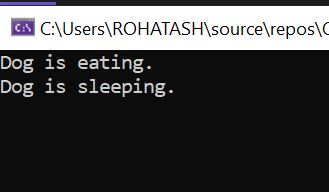`
Interface Introduction
In this article we are going to discuss Interface in C#. There are many blogs, articles are available on the internet regarding Interface but in this particular article I will try to explain to you with as much as simple.
Interface Introduction
In C#, an interface is a contract that defines a set of methods, properties, events, or indexers without implementing them. Interfaces specify what a class must do but not how it does it. A class or struct that implements an interface must implement all its members.
Key Points About Interfaces
- Declaration: Interfaces are declared using the interface keyword.
- Members: Can contain method signatures, properties, events, and indexers.
- No Implementation: Interfaces do not provide any implementation; the implementing class or struct must provide the actual code.
- Multiple Inheritance: A class can implement multiple interfaces, allowing for a form of multiple inheritance.
- Polymorphism: Interfaces enable polymorphism, allowing objects to be treated as instances of their interface rather than their actual class.
Example:
// Define an interface
public interface IAnimal
{
// Interface members
void Eat();
void Sleep();
}
// Implement the interface in a class
public class Dog : IAnimal
{
public void Eat()
{
Console.WriteLine("Dog is eating.");
}
public void Sleep()
{
Console.WriteLine("Dog is sleeping.");
}
}
// Implement the interface in another class
public class Program
{
public static void Main()
{
IAnimal dog = new Dog();
dog.Eat(); // Output: Dog is eating.
dog.Sleep(); // Output: Dog is sleeping.
Console.ReadKey();
}
}Output

Prev Next
